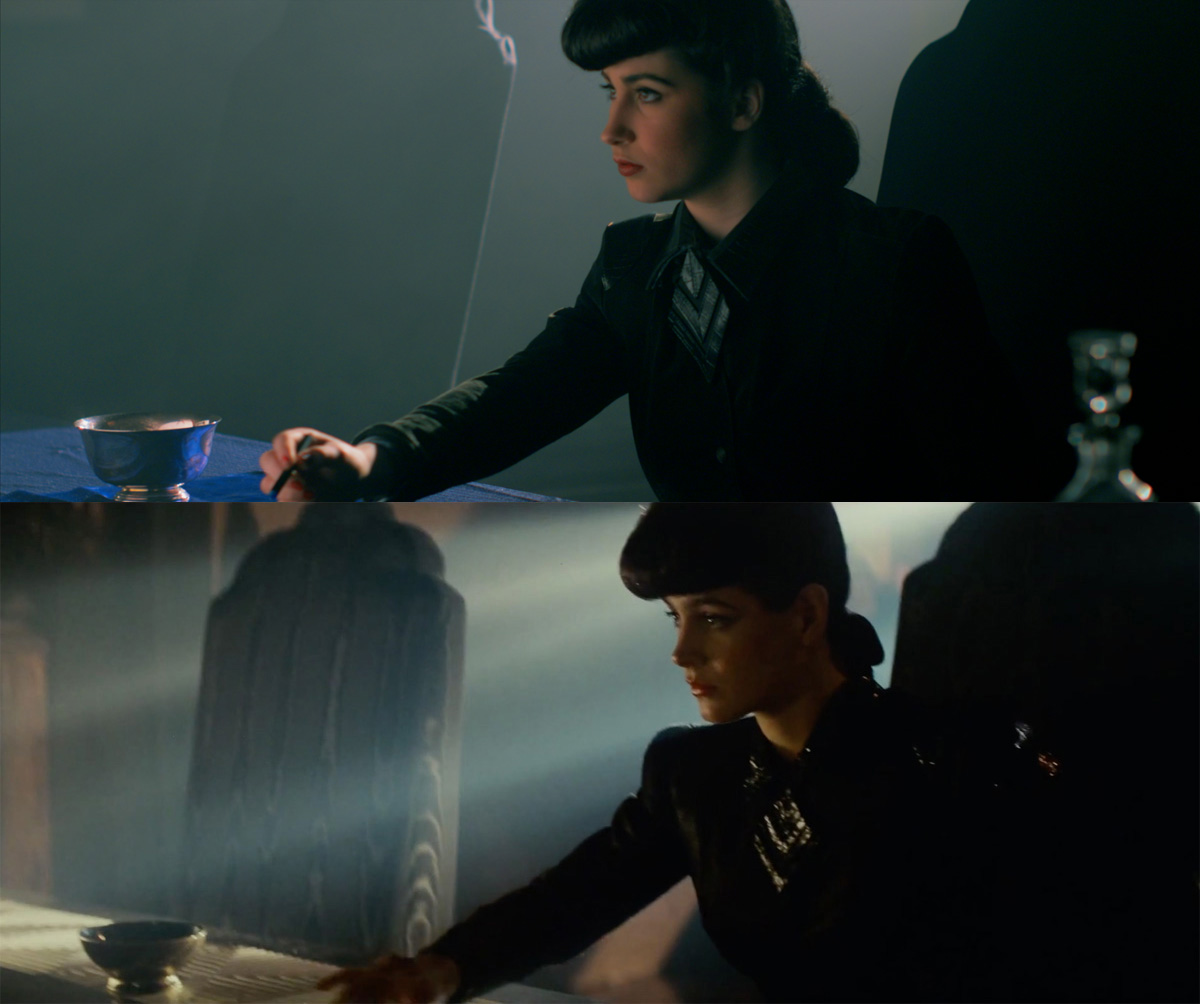
Awhile back (7/23/13), No Film School featured an article where a couple filmmakers attempted to recreate a shot from the original Blade Runner. Well, we took that attempt a bit further with the advice gleaned from the Cooke Optics “Deconstructing Cinematography – Blade Runner” featuring the DPs Geoff Boyle & Nic Knowland along with an ASC article and an interview that Ridley Scott did with Wired.
Since we had not seen anyone successfully reproduce the masterful eye-light that Jordan Cronenweth devised for Blade Runner, we decided to attempt it ourselves. After a lot of research, and much trial and error, we figured out how to accomplish the eye-light. Once we had the technique figured out, we demonstrated it by filming a corresponding scene from the movie.
Gallery of frame grabs showing our attempt vs. the original:
This shoot took quite a bit of preparation to pull off. First of all, we had a lot of trouble finding an actress that wanted to play the part of Rachael. Once we found the actress (Elaina DeJong) through MAM, it was a mad scramble to get all the costume and set pieces together in order to hopefully do a respectable job replicating the scene before our next monthly meeting.
Everything from crafting a Voight Kampff machine look alike, creating semi-matching chair backs, tweaking Rachael’s outfit to better match the original and an exhaustive effort to try and match the tie/shirt/blazer combo for Deckard, all went into the final week before the shoot. While we were not able to come up with exact matches for everything, we did come pretty close in style and texture.
A purse from a second-hand store was cut apart to get the collar and accent items for Rachael’s costume. We then tucked the actresses coat collar inward and let the modified donated shirt collar overlay the coat. After vising all of the second-hand stores in Sandpoint, Idaho trying to find a matching tie/shirt/coat combo for Deckard, we had to settle on a close match as we could not find anything quite like the originals within the time frame that we had. The style of Deckard is kind of a mis-matched collage, but somehow what he wears seems to fit the narrative. I did not want too dark of a coat because in the original scene it adds a bit of reflective light. Ultimately, we went with what looked and felt right on the actor to us at the time.
The Voight Kampff machine was created using many left over parts including a 1980’s era JVC Walkman-like cassette player, an old digital TV tuner unit, a small task lamp, a SmallHD DP4 monitor, a lot of black foam core and Gaff tape, a bellows from an old camera and many other misc. parts. The bellows movement for the close up shots was done using a stick attached to top of the bellows to create the breathing motion.
Since our group meets in a small theater space that shows movies in the evening, we were not able to do very much pre-shot preparation. The evening before, after the movie let out, consisted of folding up chairs to clear our would be set area and getting equipment staged for the next day. The day of the shoot was when everything else took place. Everything you see was shot in under 5 hours with roughly two hours of setup and take down.
Here are a few BTS photos that one of our members, Alan Barber, was kind enough to take during the shoot. **Photo credit for this group: Alan Barber**
Here is a rough lighting diagram that should help people understand how we set this up.
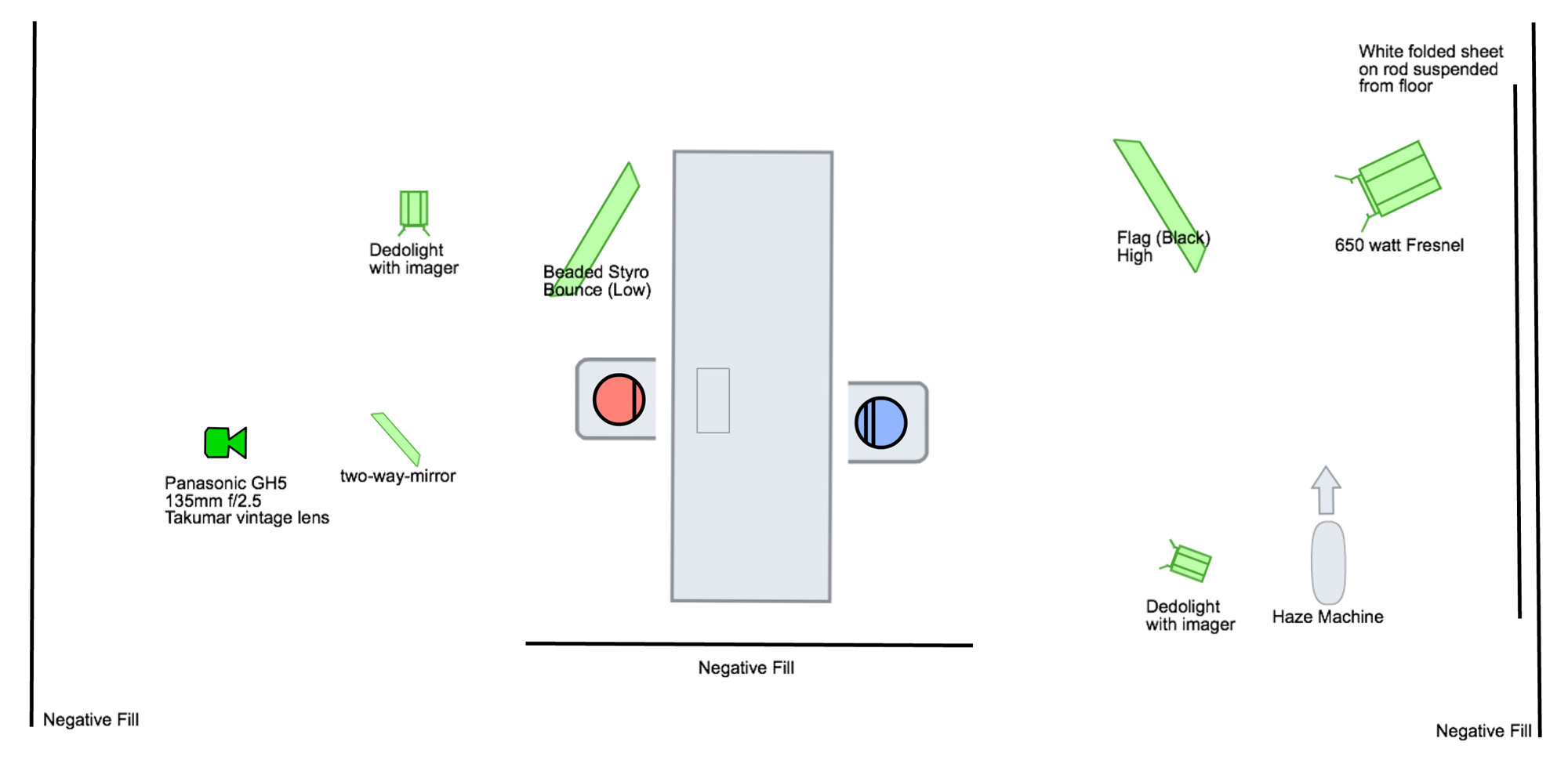
Camera and lighting equipment used for our shoot:
Panasonic GH5 – 4K DCI, 10 bit 4.2.2, exported at FHD with 2.39 to 1 overlay.
Panasonic DMW-XLR1 XLR Microphone Adapter
135mm f/2.5 Takumar lens (vintage)
50mm f/1.4 Takumar lens (vintage)
Metabones Speedbooster XL 0.64x EF to Micro 4/3
2 – Sennheiser G3 Wireless lav microphones
1 – 650 Watt Fresnel light – Lowel Fren-L (main light)
2 – 150 watt Dedolights with imagers (eye and rim light)
1 – 2×3 Styrofoam bounce
1 – 2×3 Black flag
Here is the original scene from Blade Runner which ours corresponds to:
Final thoughts:
Here are a few things I wish I had done differently.
- Use a brighter back light. Possibly 2 – 650 watt lights focused onto one area on the side of Rachael’s face would have done a better job matching the originals blown out face exposure.
- Use a cookie to break up the light beam on the medium shot of Rachael so we would have seen streaks to more match the original.
- Positioned the Styrofoam bounce vertical instead of horizontal which might have helped the light falloff a little quicker on the shots of Rachael.
- Positioned the black flag a little closer to Deckard to create a harder shadow line.
- There are a lot of other things I could nit pick, but overall, I am happy with the final result.
Special thanks to the actors Rob Lindner and Elaina DeJong.
We really had a lot of fun working on this project, and we hope you all enjoyed it!
**The Blade Runner images used in this article are for education purposes only and Copyright is held by Warner Bros. Entertainment Inc. The original screenplay was written by Hampton Fancher and David Peoples based on the novel “Do Androids Dream of Electric Sheep?” by Philip K. Dick. The original film was directed by Ridley Scott with the Cinematography done by Jordan Cronenweth.**
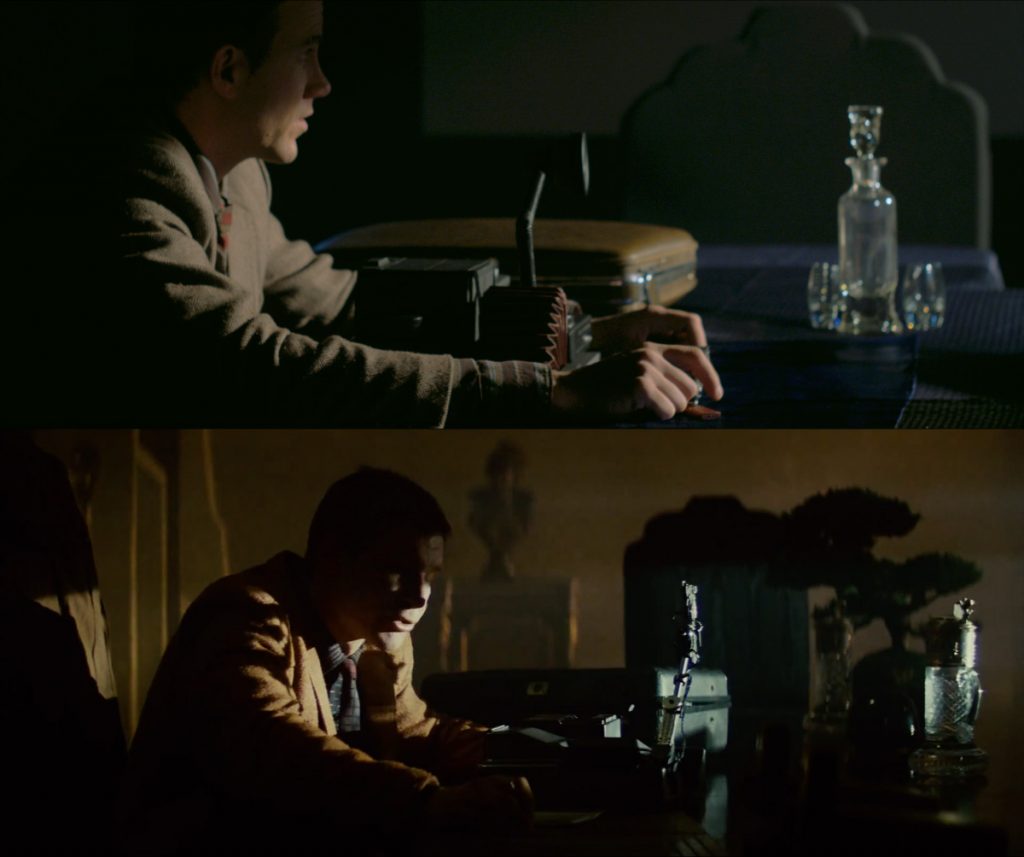
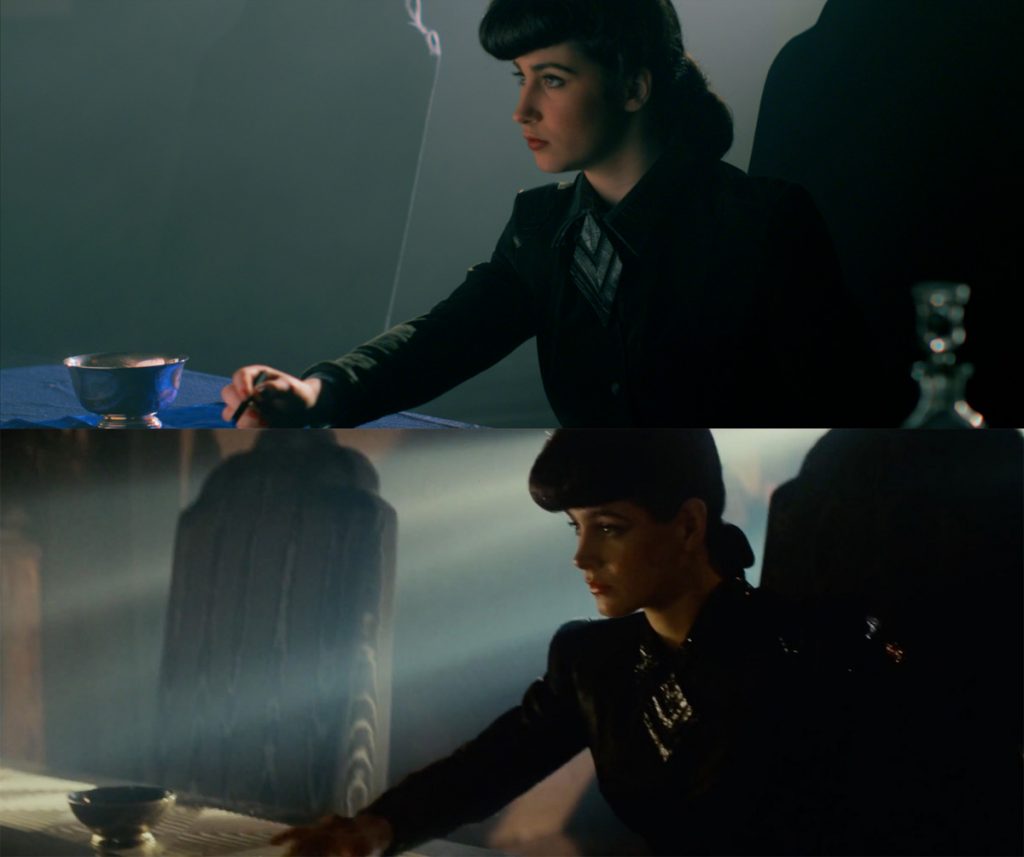
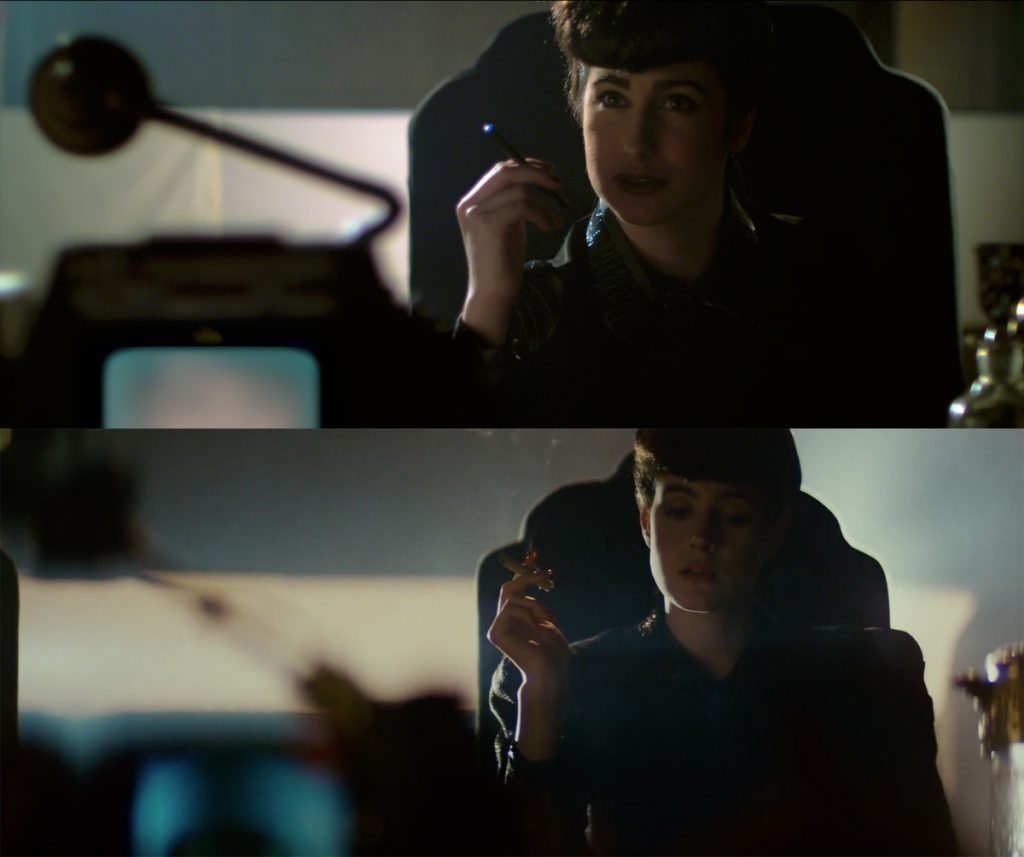
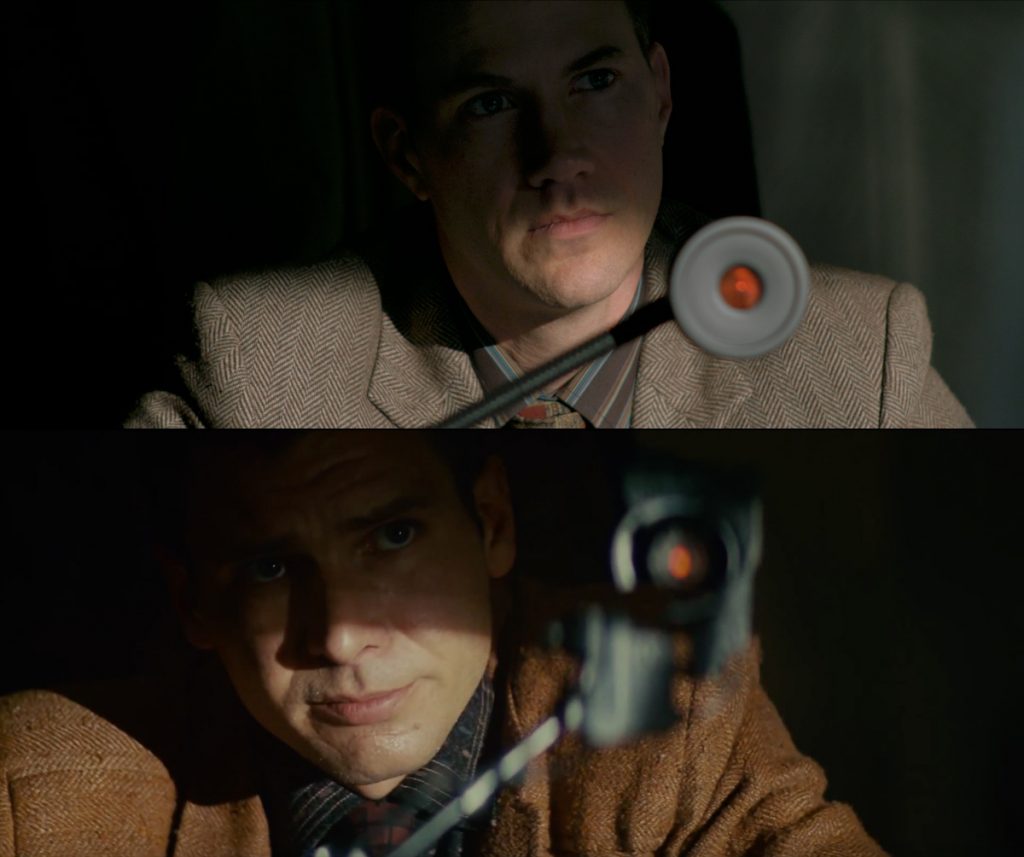
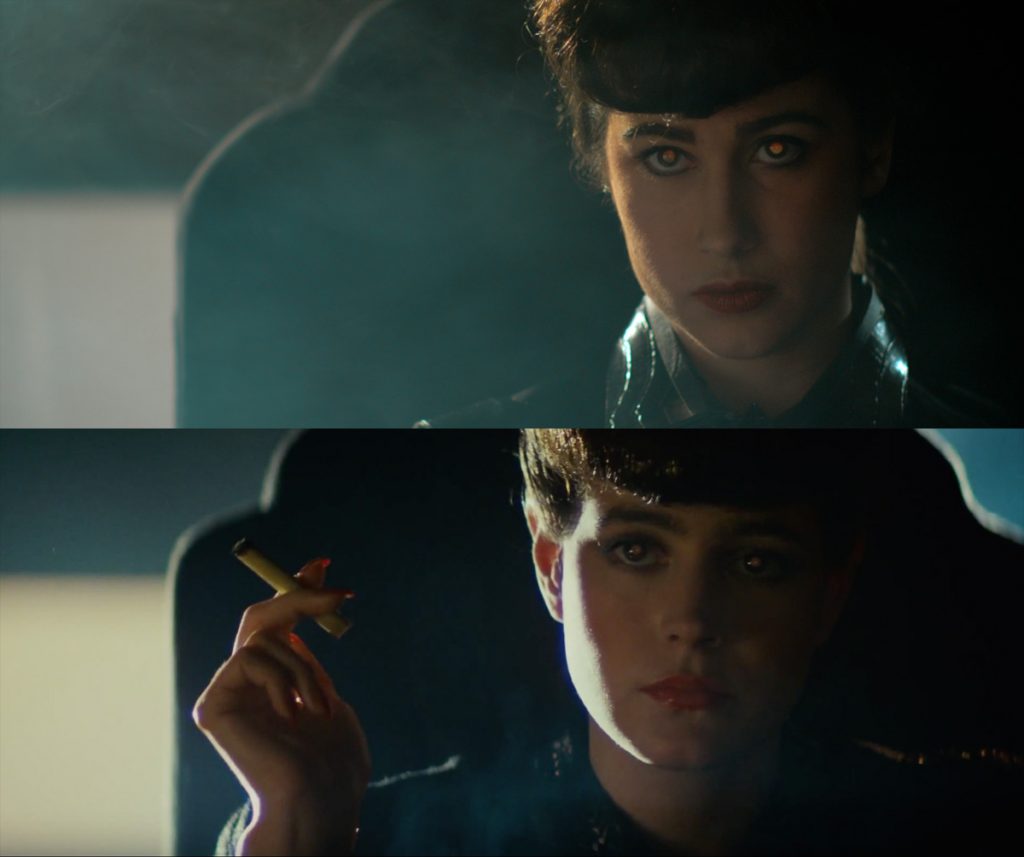
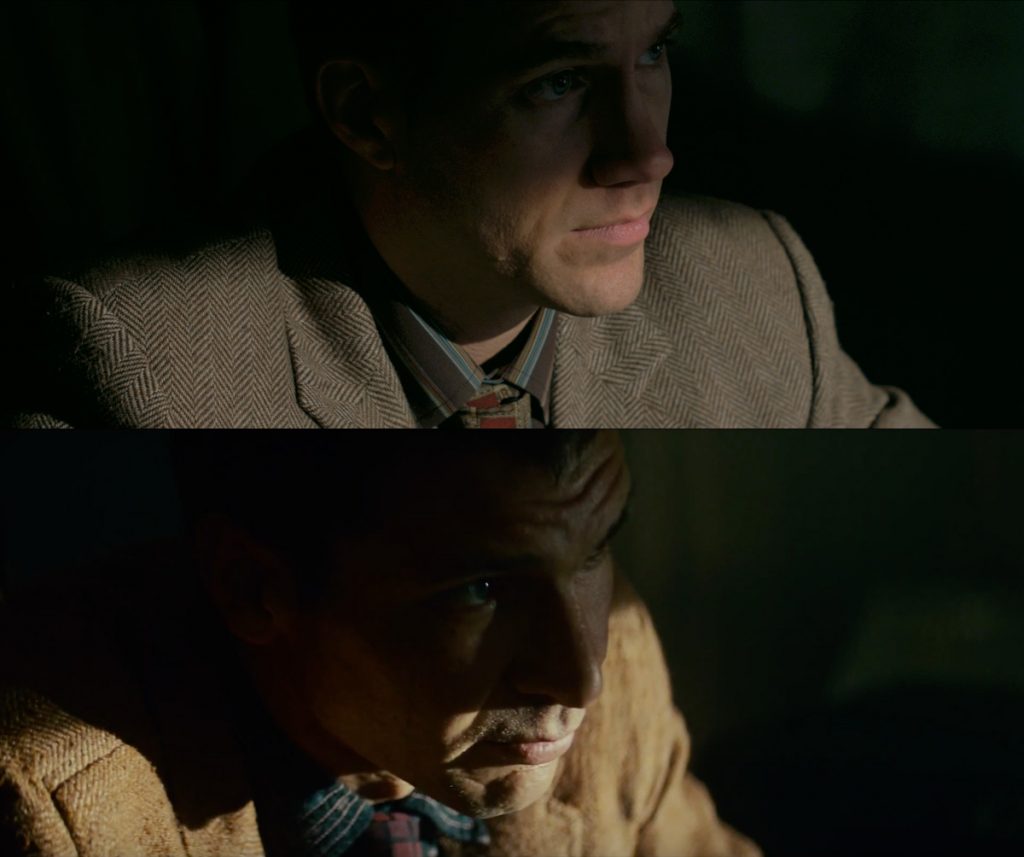
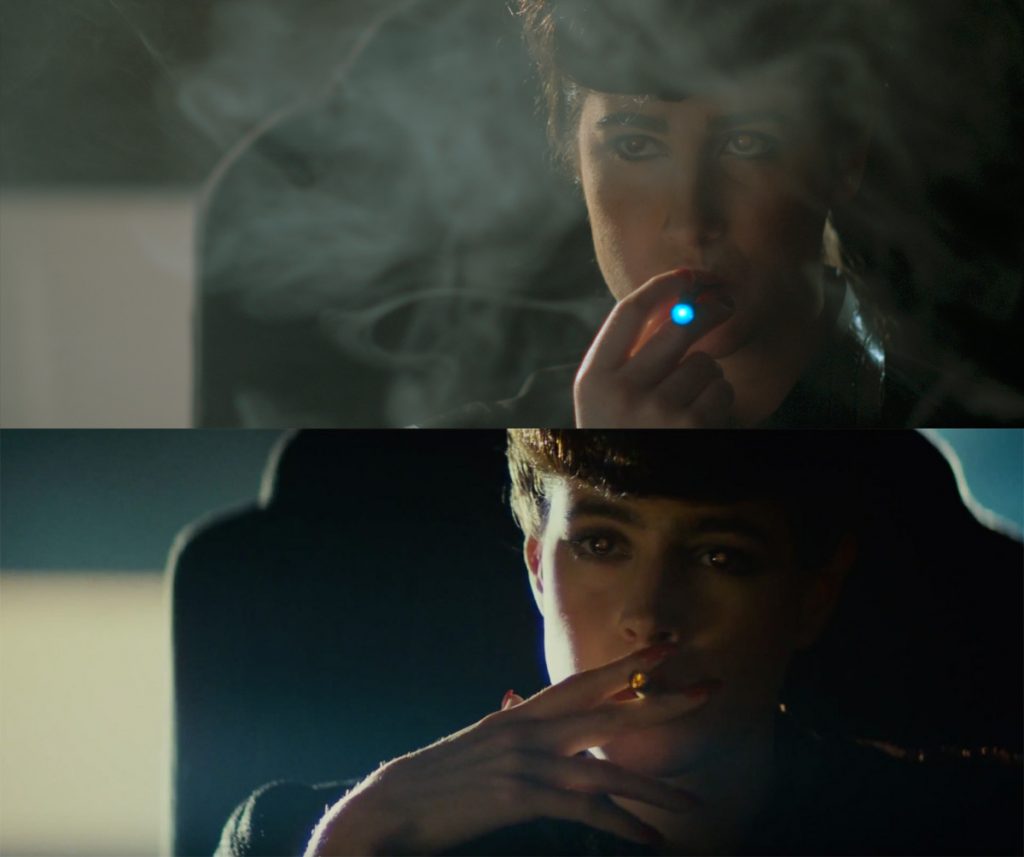
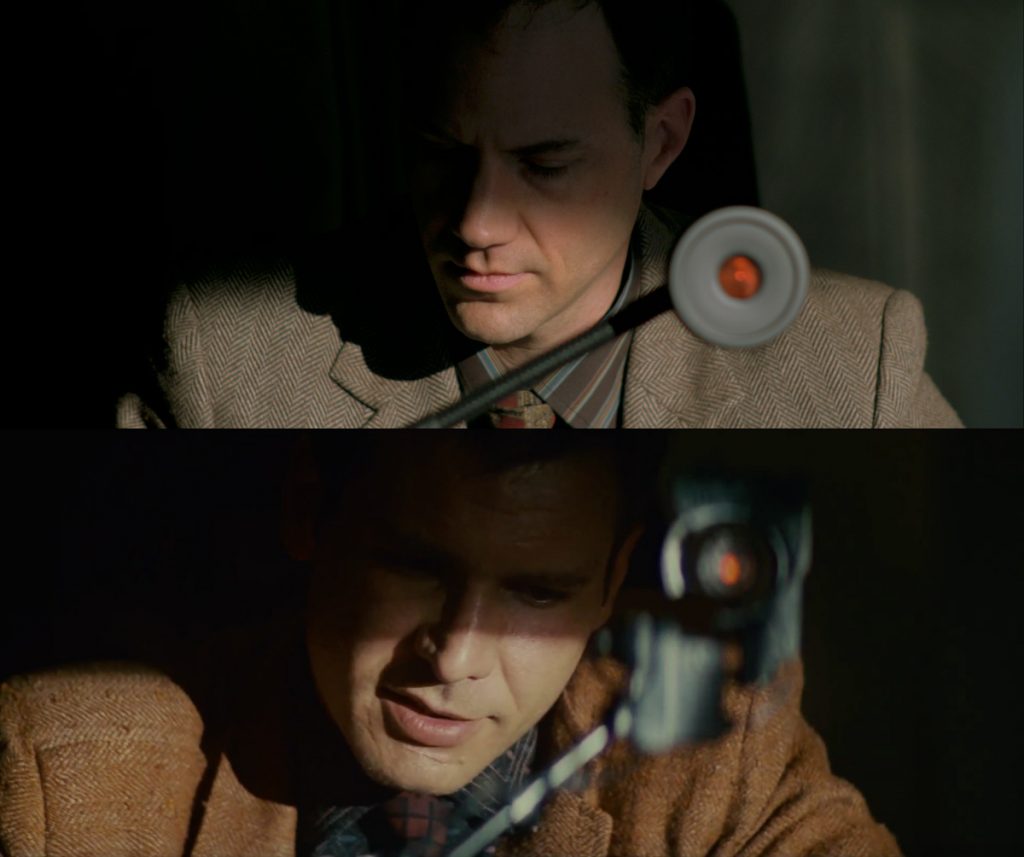
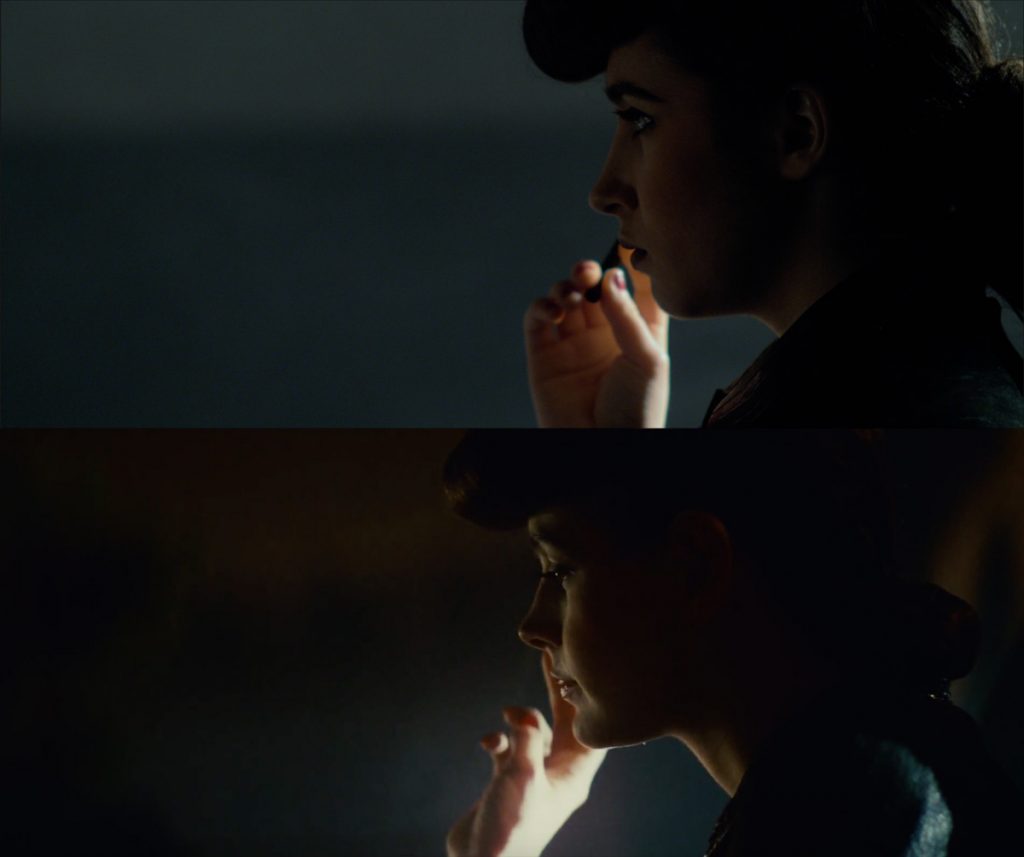
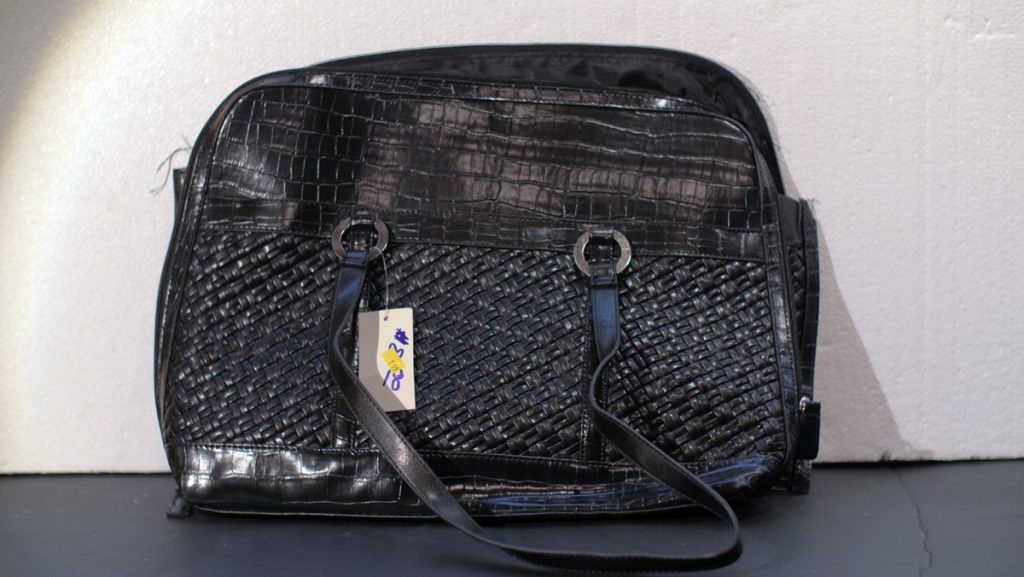
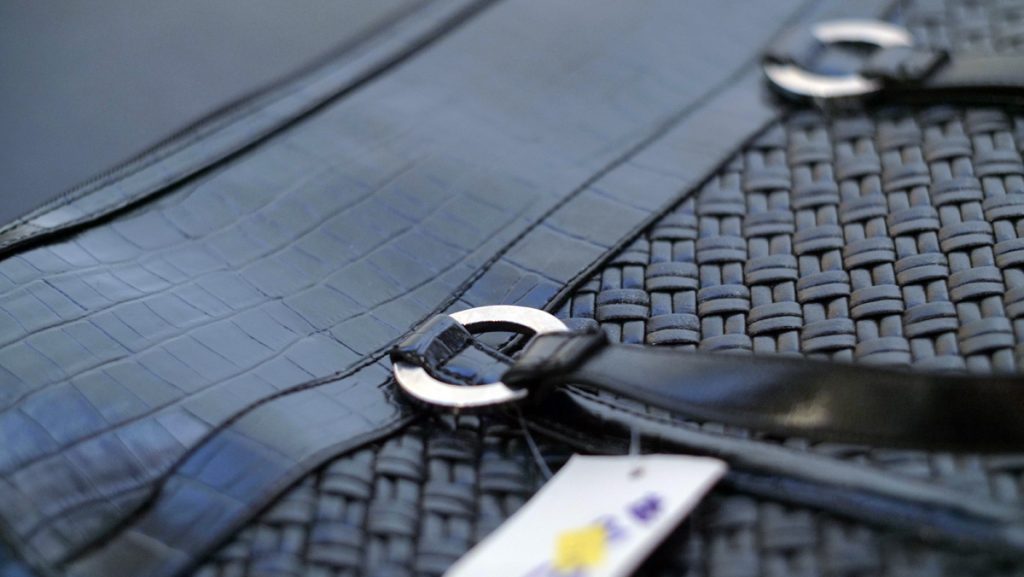
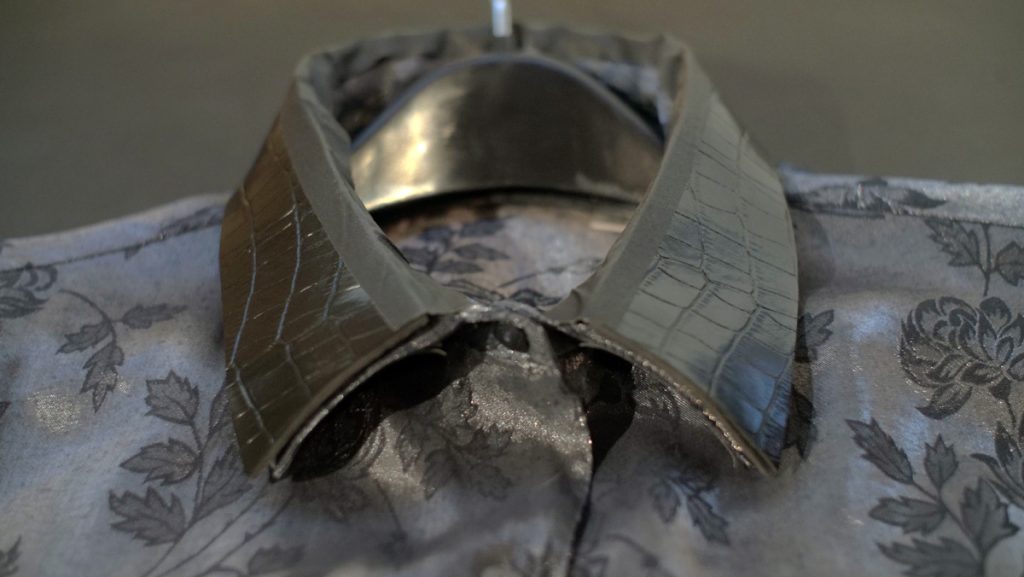
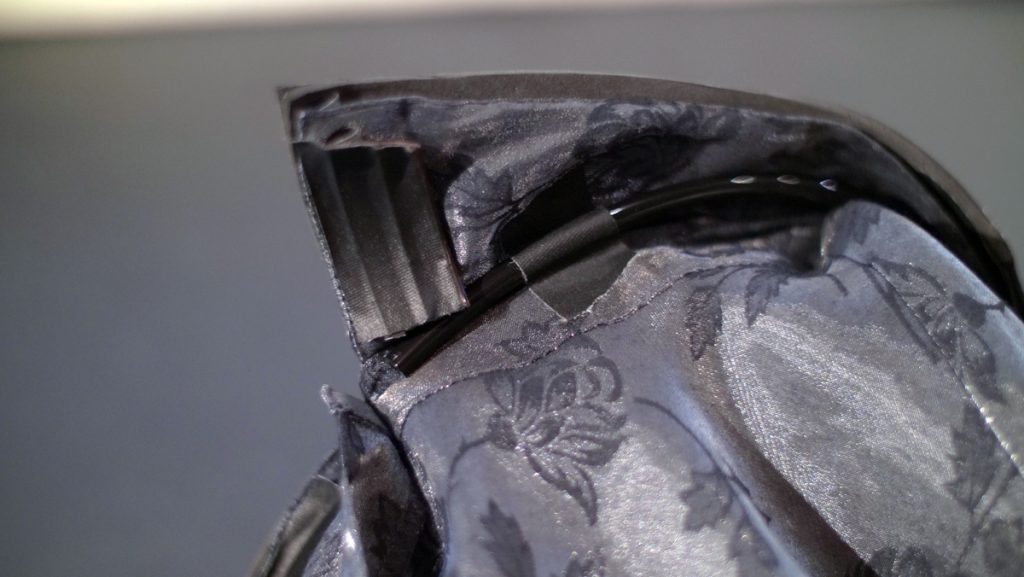
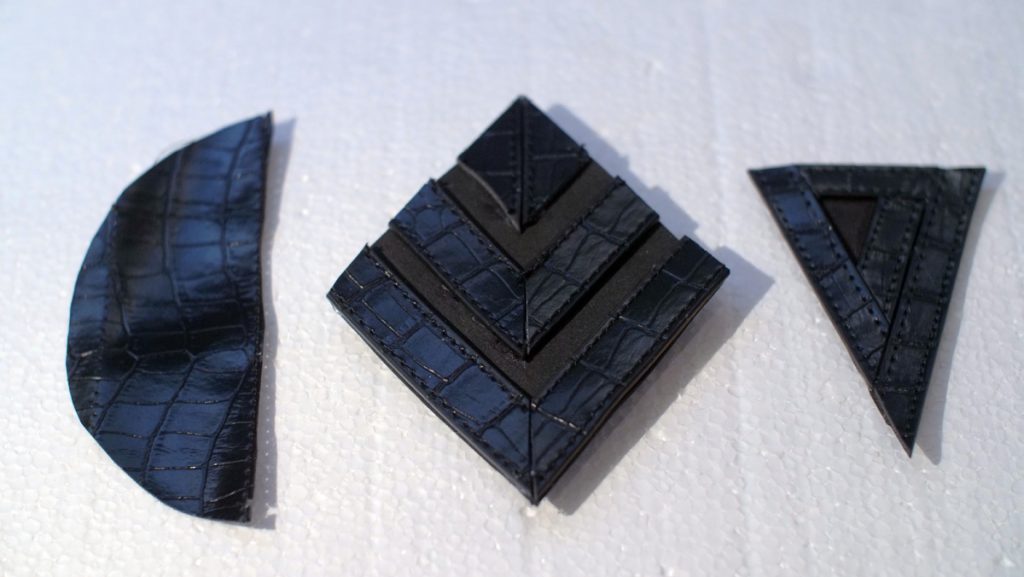
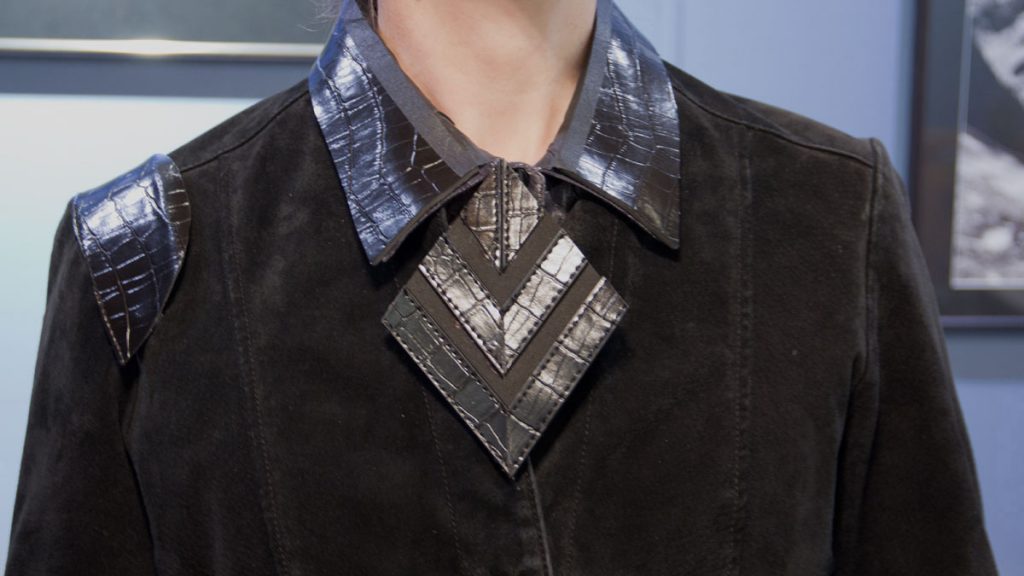
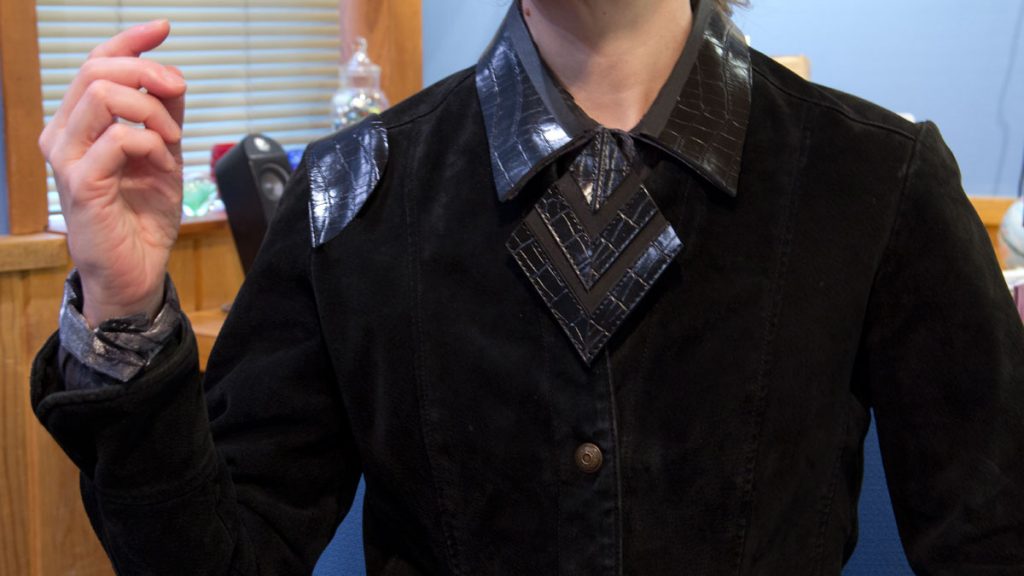
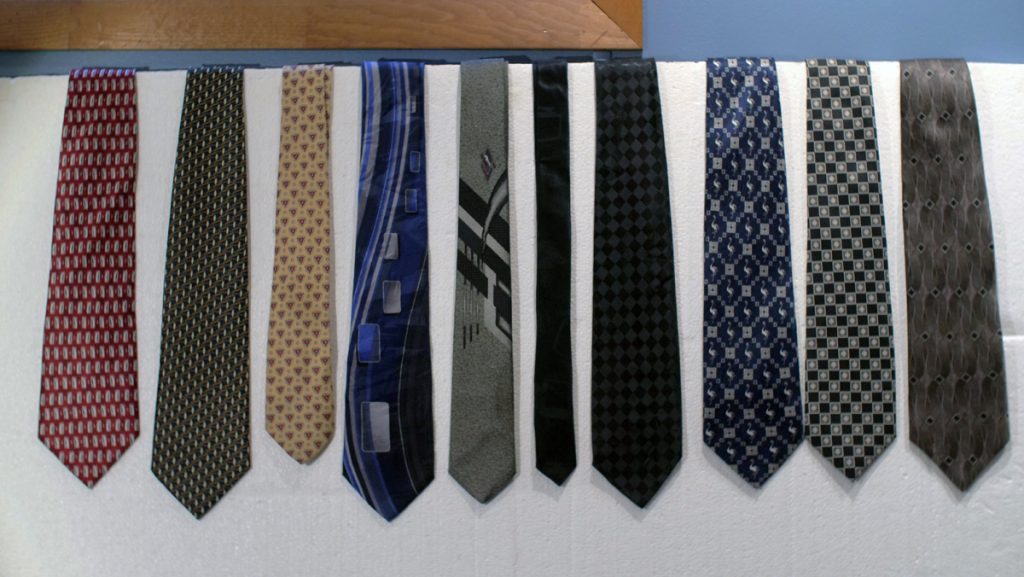
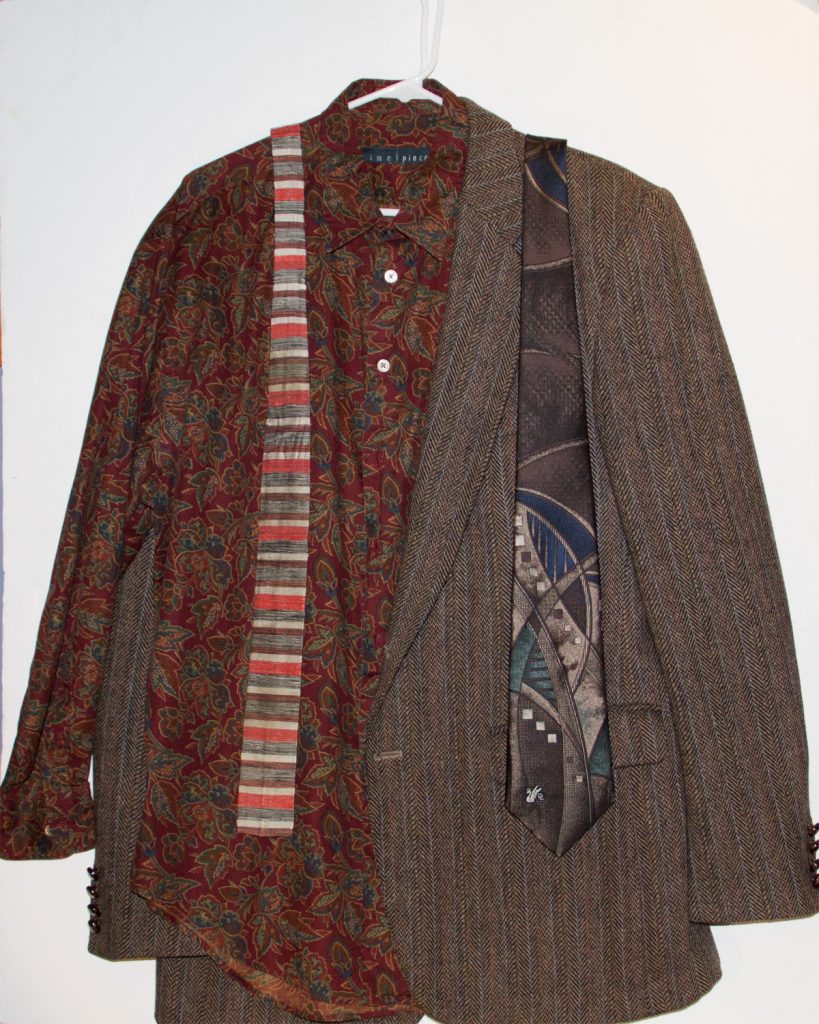
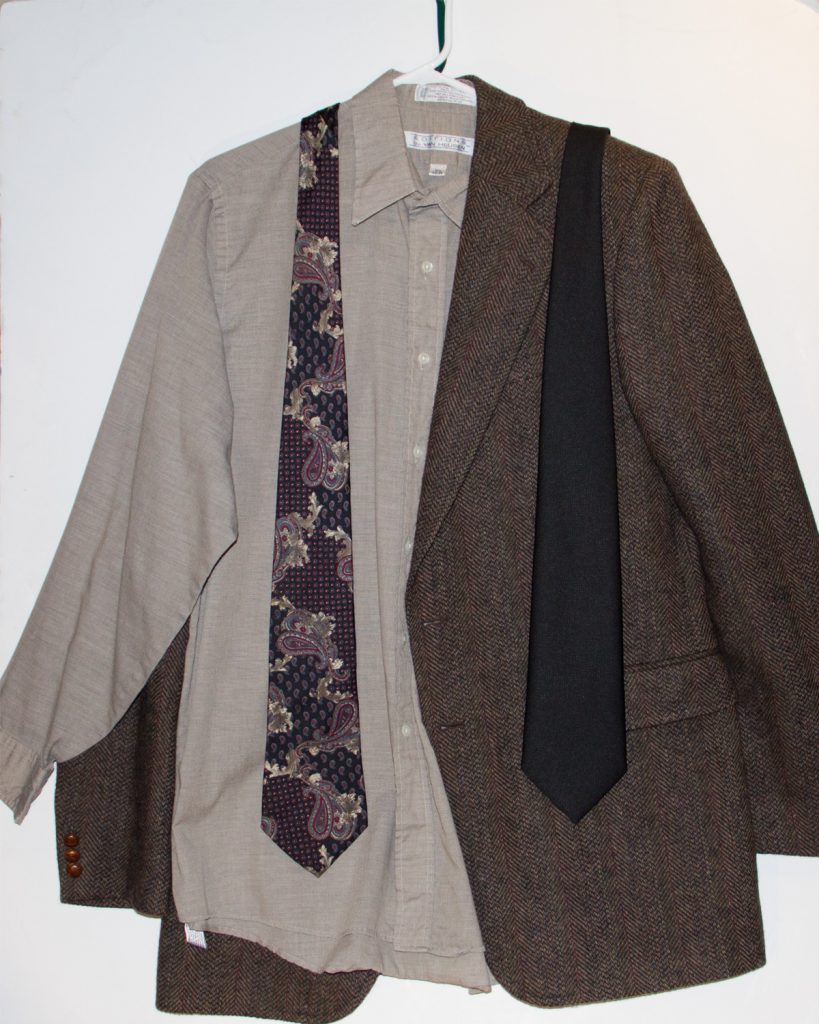
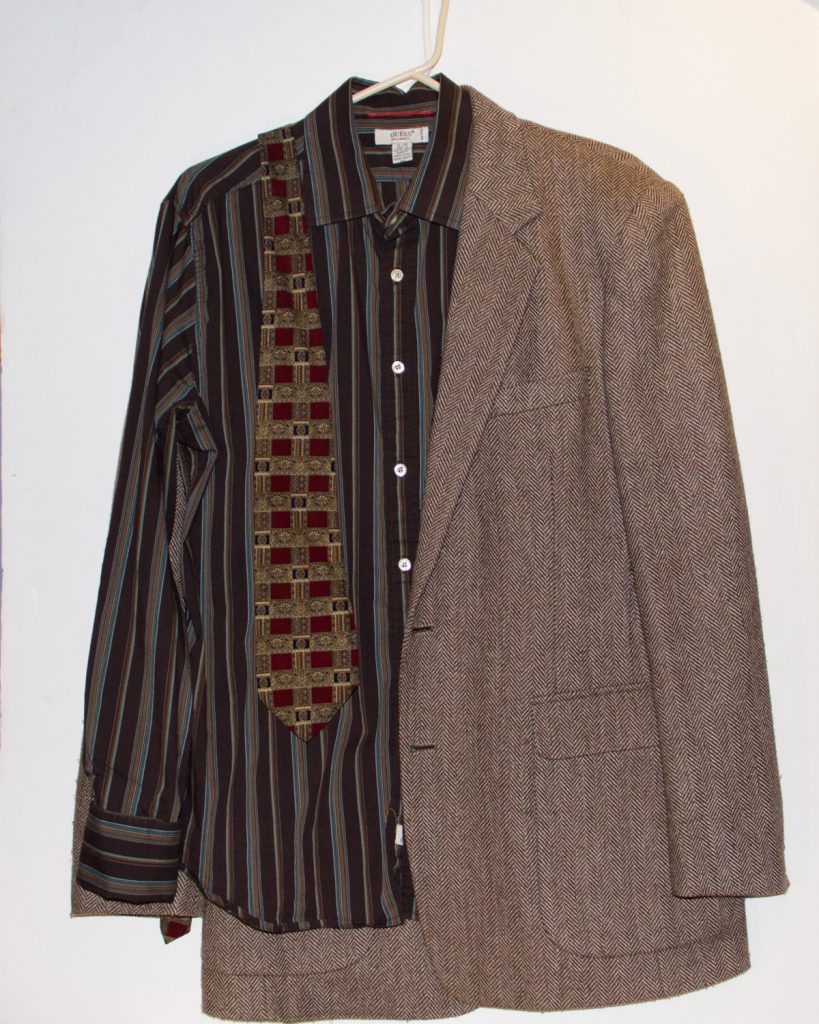
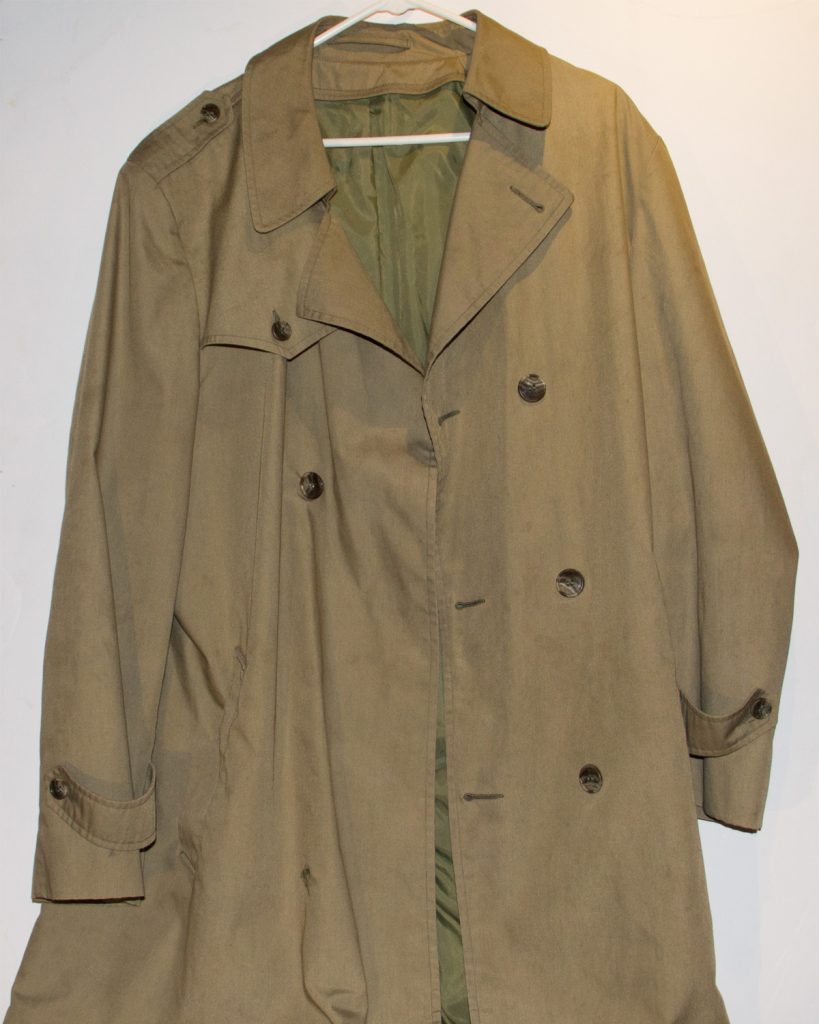
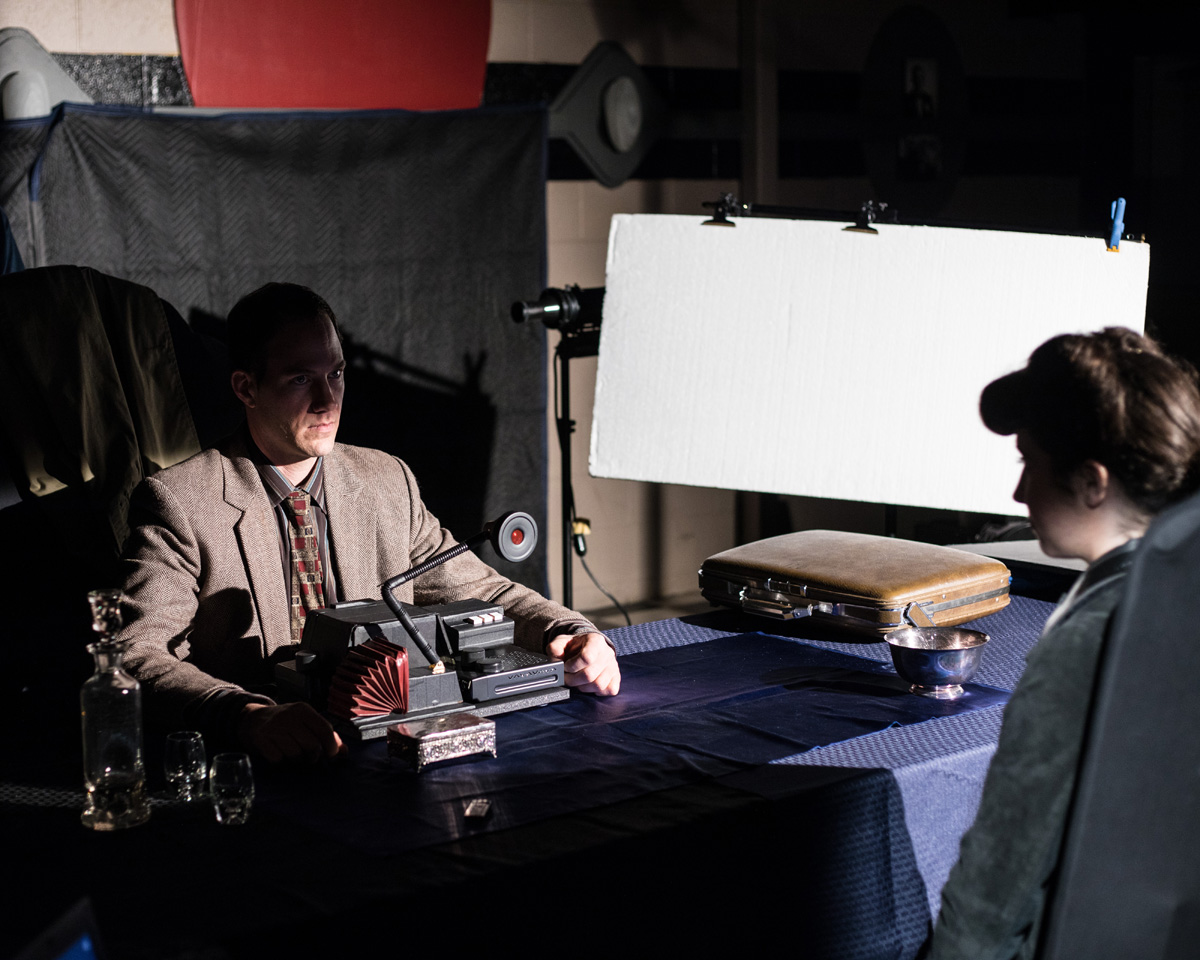

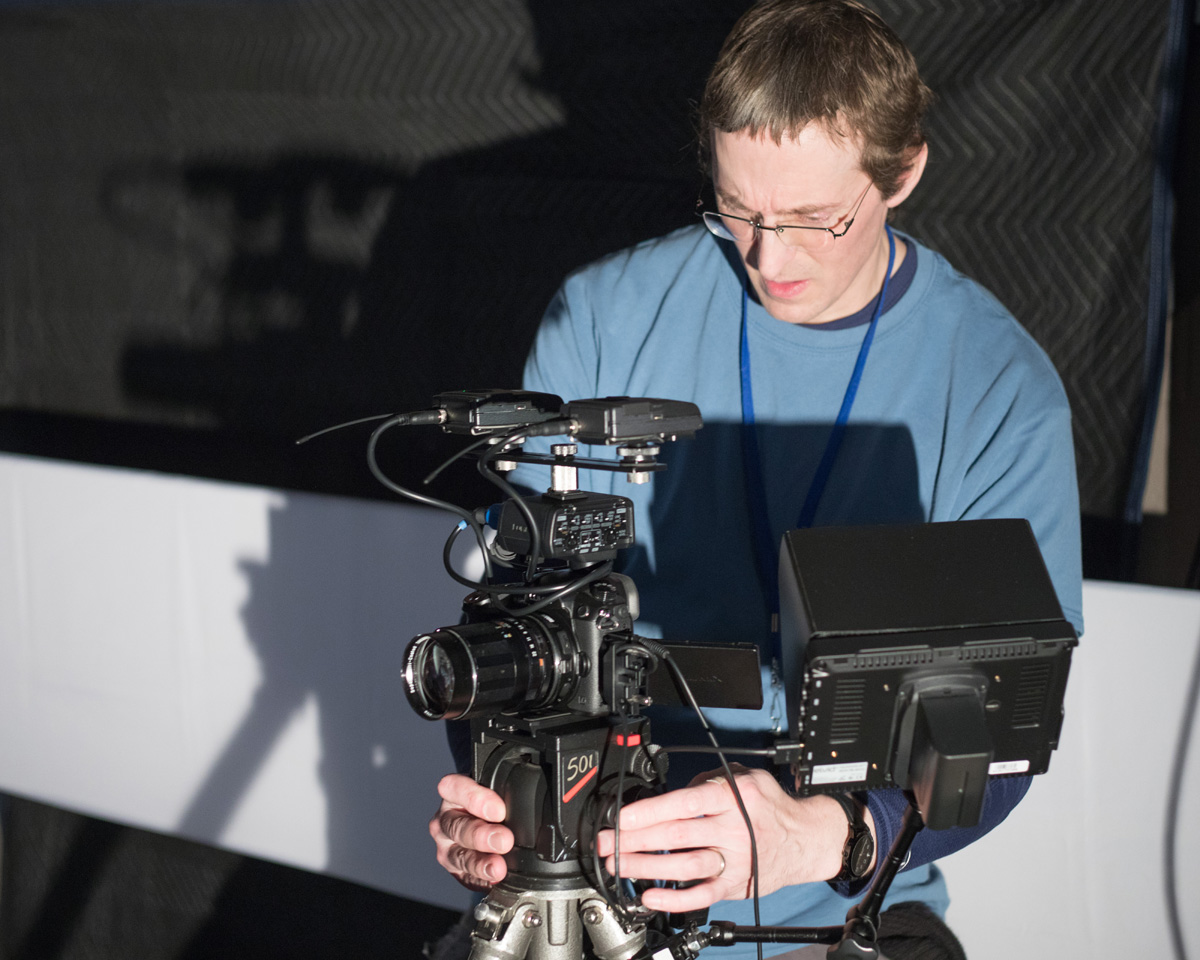
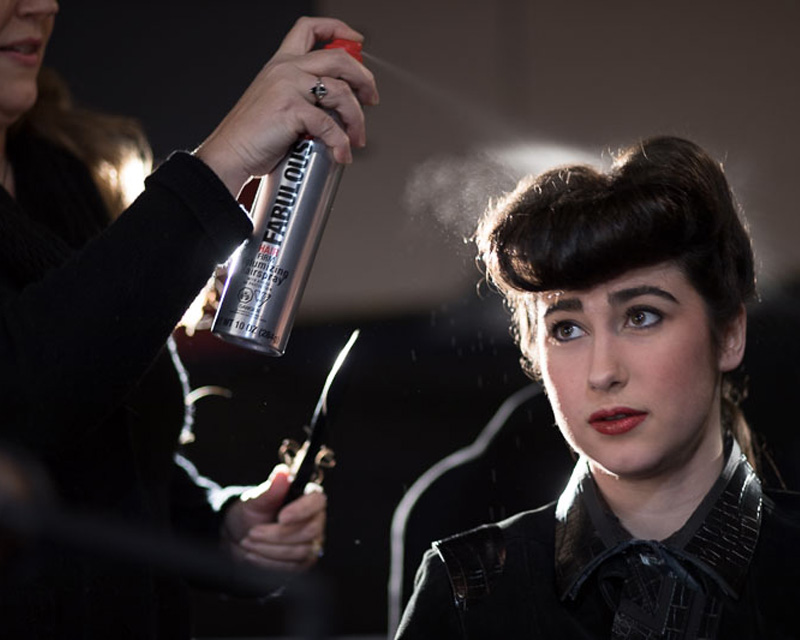
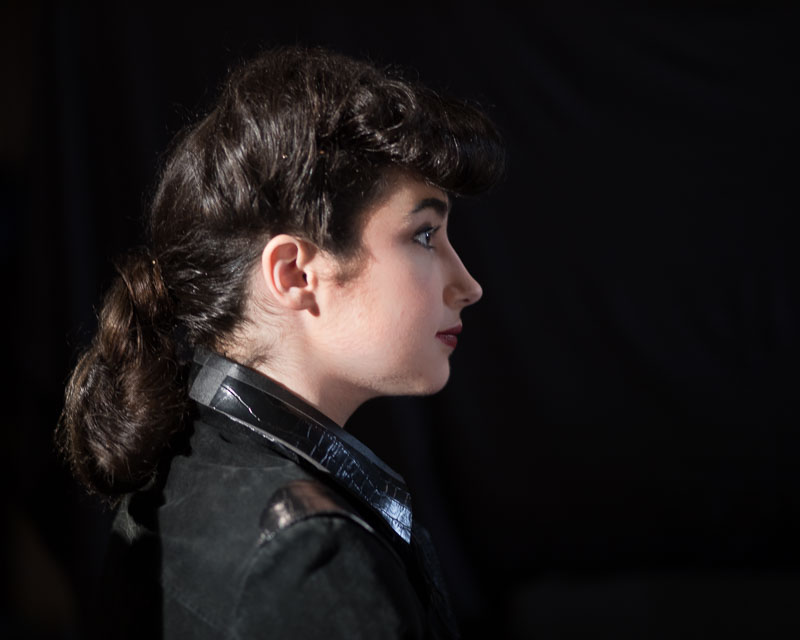

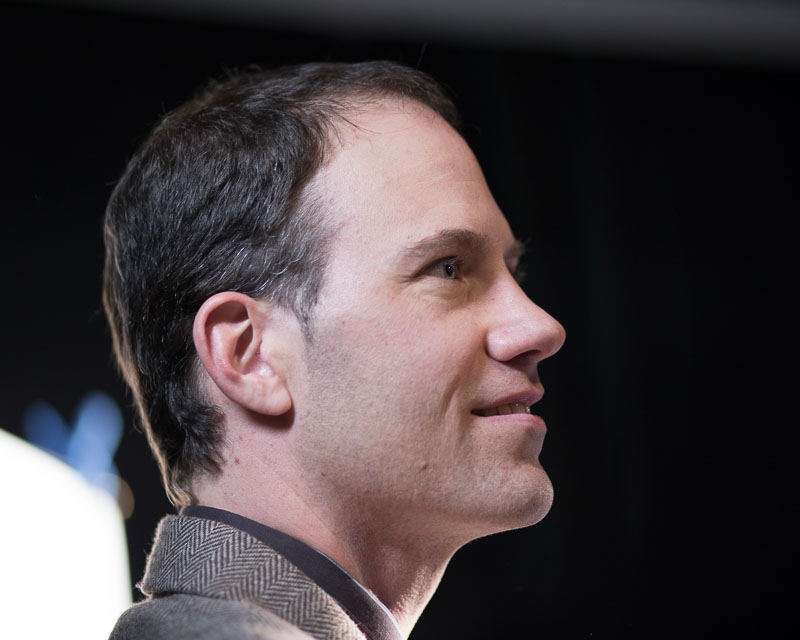
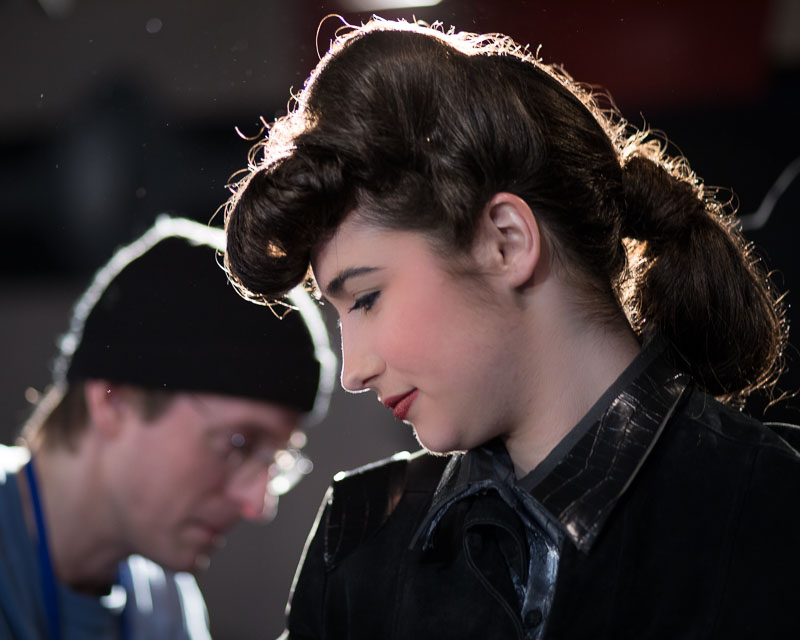
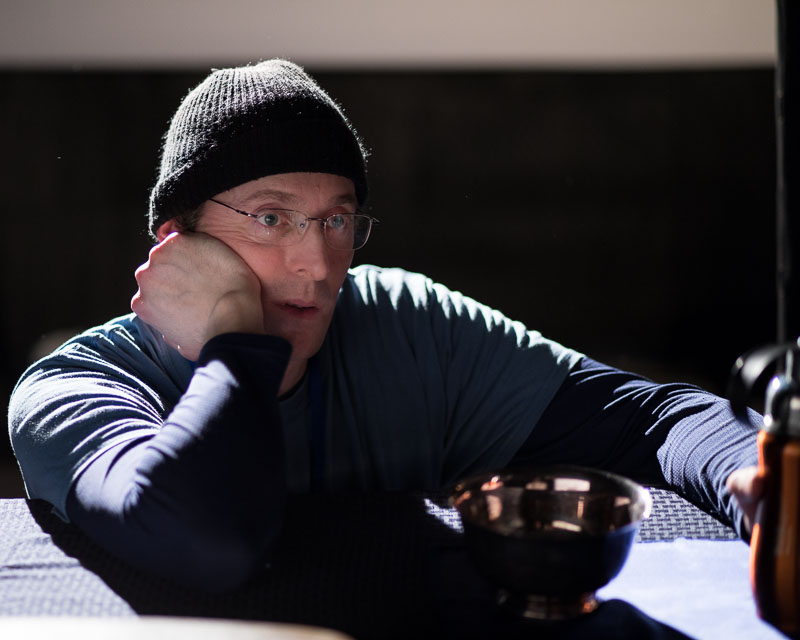
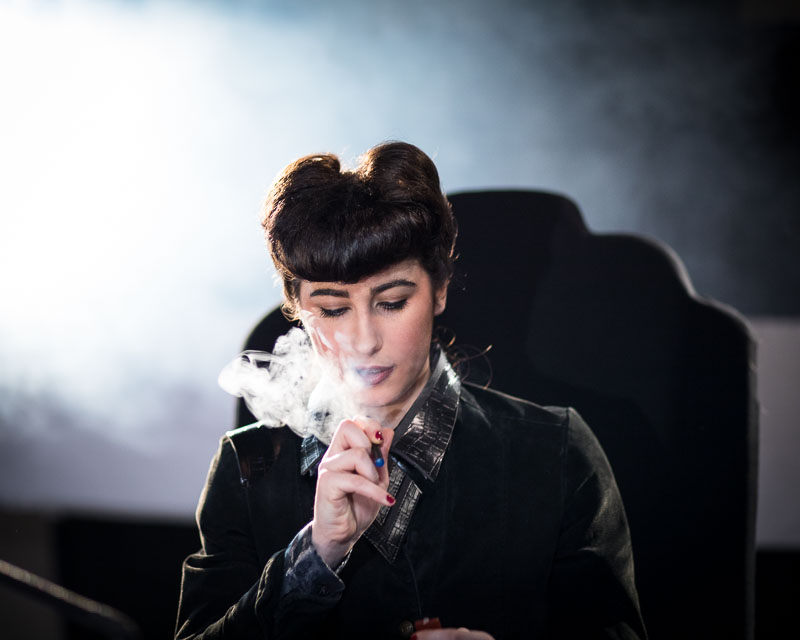
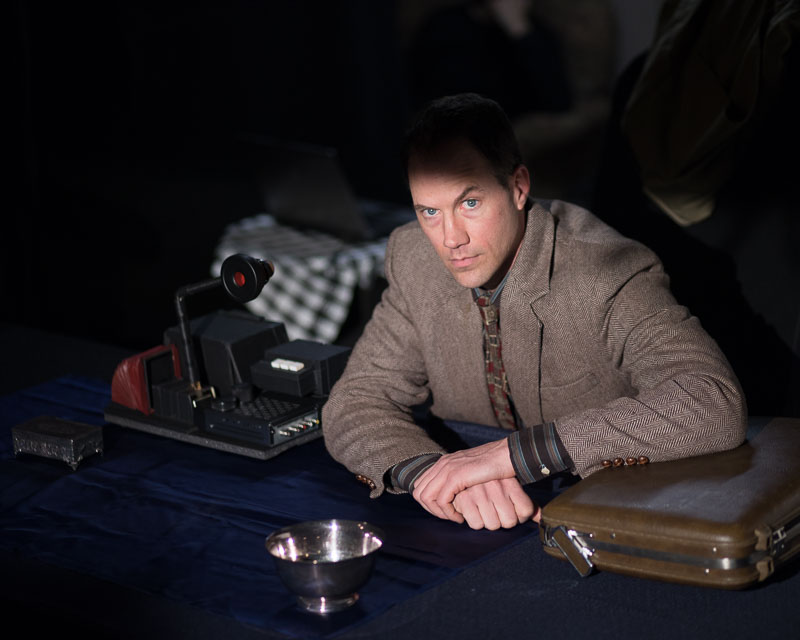
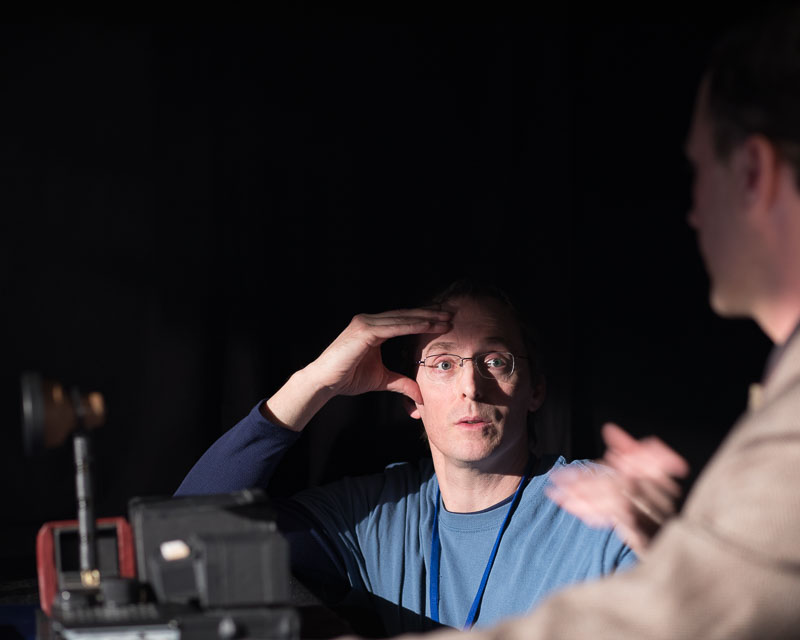
That’s just plain creepy. I love it!
Could you please share some behind the scene footage/photos on how you achieved the eye glowing effect specifically?
Hi Laurent. The links in the first paragraph of this post will tell how to do it. Specifically, the “Deconstructing Cinematography – Blade Runner” link, “ASC article” link and the interview that “Ridley Scott did with Wired” link. Basically a beam splitter is used to accomplish this effect. Check out those links and let me know if you still have questions.